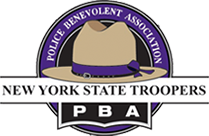Judge Patrick NeMoyer has ruled that there can be a partial release of the Attica Records but NOT the grand jury material. This ensures that the sanctity of the grand jury process will be preserved. Here is the link for the 40 page decision: Decision
Judge approves partial release of 1971 Attica riot investigation papers
By The Associated Press
on April 24, 2014 at 3:57 PM, updated April 24, 2014 at 4:16 PM
ALBANY, N.Y. — A New York judge approved public disclosure Thursday of two remaining volumes from an investigation into the 1971 Attica prison riot and aftermath, but he excluded grand jury excerpts.
Justice Patrick NeMoyer said it’s now up to New York Attorney General Eric Schneiderman, who has the 1975 Meyer Commission report, to publicly release those volumes after removing evidence from grand jury investigations into possible crimes.
“It is certainly the case that … the grand jury references in question constitute an integral part of the report’s text and help form the basis of Meyer’s findings,” NeMoyer wrote. “Those observations, however, do not by themselves override the law’s general policy of preserving grand jury secrecy.”
Schneiderman had sought court permission to reveal the fuller history of the nation’s bloodiest prison rebellion, including the investigations that followed, and answer the questions of families whose loved ones died. The Meyer Commission investigated whether there were cover-ups by investigators of wrongdoing by authorities.
In all, 11 staff and 32 inmates were killed — all but four shot by state police and corrections officers retaking the prison.
NeMoyer wrote that it’s up to Schneiderman whether to also remove names and identifying information from the rest of the report that might identify grand jury witnesses and targets, something Schneiderman had proposed.
The attorney general’s office said Thursday’s decision was “a step forward” in its effort to shed more light on one of the most tragic events in the state’s history and would decide how to best proceed in releasing a redacted version of the report. “We appreciate the need to balance the public interest in understanding events surrounding Attica and ensuring we can prevent future tragedies on the one hand with the need to protect the secrecy of grand jury proceedings on the other,” spokesman Damien LaVera said.
Thomas Mungeer, president of the New York State Troopers Police Benevolent Association, said he was satisfied with the decision, that preserving “the sanctity of the grand jury process” was the heart of the group’s argument against releasing the two volumes. The union had cited its duty to protect the rights of now-retired troopers who had been forced to testify about their actions during the riot and those who recounted it in criminal investigations and two decades of lawsuits.
About 33,000 pages of grand jury transcripts were generated by the Attica investigation and reviewed by the commission, named for the late judge who headed the investigation. The 570-page report was divided into volumes. The first with broad findings and recommendations has been released.
It said 62 inmates were indicted for various offenses, but the grand jury investigation should continue and consider all possible crimes by authorities. The original grand jury refused to indict in four cases brought against law enforcement personnel. One trooper was later indicted on a charge of reckless endangerment in 1975.
The commission emphasized “important omissions” in evidence gathered by state police and possible conflicts of interest with investigating fellow officers. It found no intentional cover-up by prosecutors. However, the report faulted police for bad planning and failing to account for the rifles, shotguns and pistols used and bullets, slugs and buckshot fired by individual officers.
Gov. Hugh Carey effectively ended official scrutiny in 1976 when he pardoned seven inmates and barred disciplinary action against 20 troopers and prison guards among the hundreds of officers who retook the prison. He commuted the murder sentence of inmate John Hill, who was convicted of beating guard William Quinn to death.
The commission concluded Quinn and three inmates were killed by prisoners.
